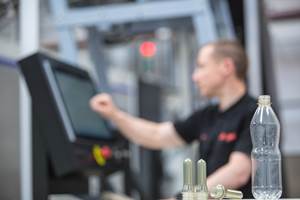NPE News Preview: Blow Molding--Higher Speeds, More Cavities, Faster Changeovers
Improving productivity while minimizing capital cost and floorspace will be central themes of blow molding exhibits at NPE 2006.
Improving productivity while minimizing capital cost and floorspace will be central themes of blow molding exhibits at NPE 2006. Extrusion blow introductions include a unique fast-cooling technology that significantly reduces cycle time and an eight-head, “shot-pot” blow molder with an integrated screenchanger for consistent processing of regrind.
Stretch-blow developments include a new high-speed unit that raises the bar for production of small PET bottles and the industry’s first all-electric one-step machine for cosmetics and pharmaceutical containers.
A unusual show demonstration will highlight the use of new tandem-blow, continuous-extrusion technology to produce 8-oz HDPE milk bottles as a replacement for paperboard cartons.
Speedier extrusion blow
Techne’s FCS fast-cooling technology is now available for the first time on its continuous-extrusion machines in the U.S. The company declined to disclose specific details on the patented technology, which is integrated into the machine. However, it is claimed to cut cycle time 10% to 30%, with maximum savings achieved in larger HDPE containers from 4 to 20 liters. A 5L jerry can weighing 160 g boasts a cycle time of 11.5 sec compared with 16 sec on a typical continuous-extrusion unit, according to Techne v.p. of sales Kyle Grodzinski. At the show, Techne will make 700-cc food containers on a double-sided, 12-cavity machine. An integrated leak tester is also available on all models, reportedly affording more accurate detection than external systems while occupying no additional floor space.
Also new to the U.S. is Techne’s Model 4000T660, an 18-cavity continuous-extrusion unit for single-serve bottles for drinkable yogurt. The double-sided unit has a long stroke (660 mm per side) and produces 150-cc bottles at 6000 to 8000/hr. It also has fast color-change capability, quick mold change, and automatic in-machine trimming and oriented discharge.
Bekum will show off a productivity-enhancing technique first introduced at the K 2004 show in Germany. Bekum’s tandem-blow process blows two bottles tail to tail from a single parison, one blown from the top and one from the bottom. Bekum will demonstrate tandem blowing on a BM-406D continuous-extrusion shuttle machine making 8-oz HDPE single-serve milk bottles. With higher cavitation, the process reportedly gives 20% greater output than reciprocating-screw systems, which currently dominate this emerging bottle market. Another advantage is bottle lightweighting via 100-point parison programming. One machine has already been sold to a leading U.S. dairy.
Bekum also plans to showcase its new BA-14 CoEx system, claimed to be the industry’s largest six-layer coex machine designed for lab R&D use. With clamp sizes accommodating containers up to 20-L and die size capability of 50 mm to 228 mm, Bekum hopes the machine will spur development of new barrier applications including small-engine fuel tanks. After the show, the machine will be installed at Bekum’s process development lab at its North American headquarters in Michigan.
For large-volume industrial applications, Graham Engineering Corp. will introduce a five-head “shot-pot” machine (SPM Series) that extrudes five monolayer parisons weighing 4.8 lb each. The machine complements a five-head, dual-layer machine that was introduced at NPE 2003. Graham’s shot-pot system is similar to an accumulator head, except that one accumulator feeds multiple parisons. Control of the parisons is said to be more uniform than with typical multi-head accumulators. The new machine is claimed to offer 2.5 times the output of a dual-accumulator machine at only 1.5 times the capital cost. The first machine has been sold for a lawn-and-garden application.
Graham will also launch an eight-head shot-pot machine with an integrated screenchanger for HDPE and PP dairy containers up to 1 gal and lightweight industrial containers up to 2 gal. As an alternative to reciprocating screws, this machine is said to run a cooler melt with less shear while also offering better parison quality and 15% to 20% shorter cycles, depending on the bottle size and process design.
The continuous screenchanger, which sits between the extruder and shot pot, eliminates concern over regrind contamination and is unavailable on traditional recipricating-screw machines for lightweight containers. A novel feature is the incorporation of breaker plates on both ends of the screenchanger to withstand pressure from both the extruder and shot pot.
A return to packaging
Kautex Machines Inc. will mark its return to the consumer packaging sector with the U.S. introduction of its KKC shuttle line. Three models (KCC 10, KCC 20, and KCC 25) are available in single- and double-station versions for detergent, cosmetics, and oil containers from 30 cc to 30L. In Chicago, Kautex will operate a KCC 20D with a WVP 140 dual-parison head producing gallon round handleware bottles at about 1000/hr. The machines are built in China but export models comply with all U.S. regulatory and safety requirements, according to Kautex president Wolfgang Meyer. The first U.S. machine will go to a custom molder of 2.5-gal canisters.
FGH Systems, distributor of German-built Uniloy B&W shuttle machines, plans to exhibit a new model with several upgrades, including interchangeability with existing molds, tiebar-less accessibility, in-machine trimming and labeling, and closed-loop position and speed control. The new UMS24D can be configured for single- or double-sided production and up to seven-layer coextrusion.
The 30-ton UMS24D takes up to 12 cavities and produces personal-care and food and beverage containers up to 2.5 gal. Bottles are fully trimmed in the machine, providing precise neck finish comparable to injection blow, says Frank Hohmann, president of FGH. In place of tiebars, the horizontal shuttle runs on guide rails with a rack-and-pinion synchronizer to ensure platen parallelism.
New from Automa are short- and long-stroke versions of its Apex AT continuous-extrusion line. The Apex AT 450, available in single- and double-sided versions, has a bobbing extruder. It takes up to six cavities and produces detergent and household chemical containers up to 6L at 4300/hr. The Apex AT 800 is targeted for larger chemical containers. It takes up to 12 cavities and output is 8500 bottles/hr.
Jackson Machinery plans to demonstrate its new Versamatic 415 continuous-extrusion unit for long runs of a single product. The single-sided machine has a small footprint and is an economical solution for containers up to 1 qt, according to President Robert Jackson. The machine features inline trimming and oriented discharge. It runs up to four cavities and produces about 7 million bottles/yr. At the show, the machine will produce quart HDPE rubbing-alcohol bottles.
Wheel improvements
Improvements to its Series IV wheel machines will be announced by Wilmington Machinery. These include single-point water connections, simplified on-board pneumatic controls, motorized mold-open/close feature for easy changeovers, and motorized traverse for maintenance. The machine runs 12 to 30 cavities in a range of clamp sizes, producing motor-oil and detergent containers up to 10L.
Urola USA will introduce the M6-SC six-station wheel, which boasts 25% faster cycles than previous models. Key features include servo-driven takeout, faster trimming, and a mechanical mold-closing system with a small hydraulic cylinder for final closing. Output for 1- to 2-gal industrial and chemical containers is 2000/hr.
New all-electric extrusion blow models will debut from Automa and Plastimac SpA (the latter represented here by American Jet Stream). Plastimac’s new Plastiblow PB2E/D is equipped with a double carriage and clamps that rest on horizontal linear guides. Optimized head design reportedly facilitates quick color changes. The Eledrive parison programmer provides 128-point control. The double-sided machine runs up to three cavities and produces 300-cc bottles in a 10-sec cycle. At the show, the machine will have a triple head for producing HDPE shampoo bottles.
Automa’s first all-electric extrusion blow machine, called the Apex 300, has a horizontal stroke and bobbing extruder. Available for the first time in the U.S., the machine takes up to five cavities and makes 150-cc to 1.5L HDPE containers at about 3600/hr.
A new three-layer reciprocating-screw machine is Uniloy Milacron’s first coextrusion model in this line. The UMR 2000-3L is aimed at extended-shelf-life applications, particularly dairy bottles manufactured outside the U.S. The new machine offers 20% to 30% faster cycles, a simpler design, and less maintenance than shuttle or wheel machines, according to sales and marketing manager Rich Smith.
The machine has dual 65-mm extruders, a 12-parison head, and Uniloy’s proprietary deflashing system. Since it is designed to produce three-layer HDPE bottles with a middle layer of post-consumer recyclate, an automatic screenchanger is integrated into the machine to protect against regrind contamination. Output for 1L to 1.5L dairy bottles is 5760/hr. Other models will target bottles from 80 cc to 4L.
PET outputs soar
A new 34-cavity Sidel rotary reheat stretch-blow system reaches a new productivity level of 61,200 bottles/hr and is claimed to be one of the fastest machines in the world. Model SBO 34 Highspeed is for small containers up to 24 oz. Higher production is facilitated by lighter mold-support units. Its operating cost is 30% less than that of two Sidel SBO 20 Series2 machines, which would be required to match its output. The SBO 34 Highspeed also fits into nearly the same space as an SBO 20. Air consumption has been reduced with an optional exhaust-air recycling system. Production changeover takes less than 50 min with two operators.
Nissei ASB Co. has introduced what is said to be the first all-electric one-step stretch-blow system. The small four-station ASB-15N/10E is a prototype that Nissei is using to gauge market interest, according to Jamie Pace, U.S. sales manager. He says that if there is sufficient interest, Nissei will consider building larger versions. The machine has a footprint of 3 x 8 ft. At the show, it will run 15-cc PET mascara bottles in a 10-cavity mold on a 9-sec cycle for 4000 bottles/hr.
Meanwhile, Nissei’s Chinese-built reheat stretch-blow system will make its North American debut. The NB series is offered in two- and four-cavity versions for narrow-neck PET bottles up to 6L. The machine boasts a small footprint and output of 2000 bottles/hr for carbonated soft drinks, water, and shampoo.
SIPA North America, primarily a supplier of rotary reheat stretch-blow systems, will introduce its new-generation linear stretch-blow machines to the U.S. The SFL 4 and SFL 6 models are claimed to offer higher speed, greater output, and lower energy use than previous models. The SFL 4 runs up to four cavities and produces up to 3L containers at up to 7200/hr. The machine employs servos for a synchronous motor-driven oven and blow clamp. The SFL 6 runs up to six cavities and produces up to 10L PET containers at up to 9000/hr.
The SFL’s preform chain has a quick-connect spindle-mounting system that allows changeover of neck tooling and molds in only 30 minutes. The preform chain is made of lightweight plastic to minimize wear and eliminate lubrication and maintenance.
A new rotary reheat stretch-blow system from SIG Corpoplast is making its U.S. debut as a cost-effective method of making PET oval bottles. It is said to offer higher output, reduced container weight, and lower molding cost than typical one-step processes or other two-step systems. The new model boasts high-precision preferential heating and a specially designed mandrel and preform transport system that facilitate neck orientation. The machine runs up to 12 cavities at 1500 bottles/hr/cavity. Target applications are 8-oz to 1.5L bottles for ketchup, mustard, cosmetics, and household chemicals. Two machines have already been sold in the U.S.
Urola has expanded its line of all-electric reheat stretch-blow machines with a four-cavity model to supplement its two-cavity version. The Urbi-4 reportedly provides faster cycles and higher output (6400 bottles/hr) for PET bottles up to 2L. The unit also features preferential heating for oval bottles. Urola is currently designing a two-cavity machine to manufacture 4L containers.
Two new one-step stretch-blow machines from Automa provide greater output of small PET bottles and increased tonnage for wide-mouth containers. The NSB-80 is said to be an economical unit for narrow-neck bottles from 50 cc to 8L. It runs up to 14 cavities at 5000 bottles/hr for hotel amenities and small liquor containers. The six-cavity NSB 160 produces 165-mm-diam. wide-mouth PET containers for cosmetics and household chemicals at 2500/hr.
Injection-blow news
A specialized injection-blow machine made by Germany’s Ossberger will be running at distributor FGH Systems’ booth. Making its U.S. debut will be the Pressblower DSE 250 for molding large TPE automotive CVJ and rack-and-pinion boots and bellows. The machine has a 250-g shot size that can be modified to 140-g for standard-size boots and bellows. A new PC-based controller operates with a 100-point stroke measuring system for key machine functions. A 200-g CVJ boot will be made at the show.
Automa has entered the injection-blow market with its I&B hybrid series for small, narrow-neck PET bottles for cosmetics and pharmaceuticals. Two three-station models will be introduced, along with one unit with a unique fourth station. This “conditioning” station water-cools the cores down to about 135 C before the next shot. It is said to provide more reliable cooling than do three-stage systems, in which the cores get only air cooling at the eject station.
The machines’ main movements are servo-driven and thus permit cleaner operation. The four-station I&B 52-4 model runs up to 12 cavities and makes 12-mm-diam. PET mascara bottles at 6000/hr. The first machine has been delivered to a Mexican customer for 15-cc eyedrop bottles.
Related Content
Services to Help Blow Molders Convert to rPET
Sidel launches “RePETable” range of services as “one-stop” solution to efficient adoption of rPET for bottle production.
Read MoreSolve Four Common Problems in PET Stretch-Blow Molding
Here’s a quick guide to fixing four nettlesome problems in processing PET bottles.
Read More50 Years of Headlines … Almost
I was lucky to get an early look at many of the past half-century’s exciting developments in plastics. Here’s a selection.
Read More50 Years...600 Issues...and Still Counting
Matt Naitove marks his first half-century in plastics reporting, with a few of his favorite headlines.
Read MoreRead Next
Understanding Melting in Single-Screw Extruders
You can better visualize the melting process by “flipping” the observation point so that the barrel appears to be turning clockwise around a stationary screw.
Read MoreLead the Conversation, Change the Conversation
Coverage of single-use plastics can be both misleading and demoralizing. Here are 10 tips for changing the perception of the plastics industry at your company and in your community.
Read MorePeople 4.0 – How to Get Buy-In from Your Staff for Industry 4.0 Systems
Implementing a production monitoring system as the foundation of a ‘smart factory’ is about integrating people with new technology as much as it is about integrating machines and computers. Here are tips from a company that has gone through the process.
Read More



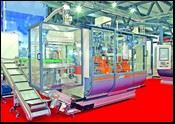

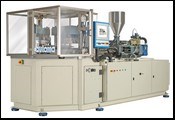



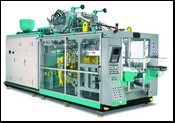
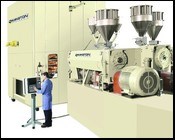


















.png;maxWidth=300;quality=90)

